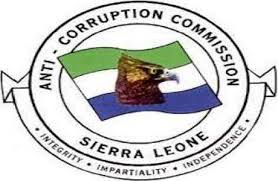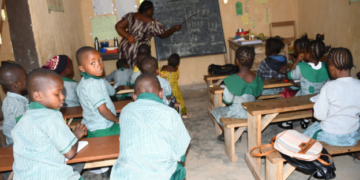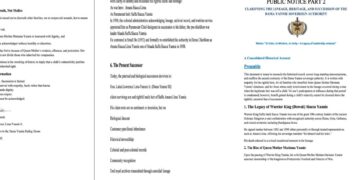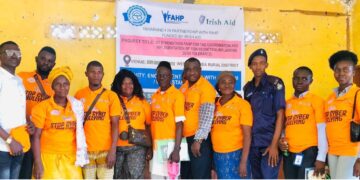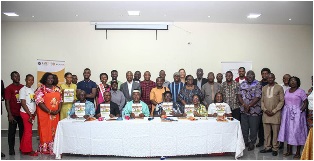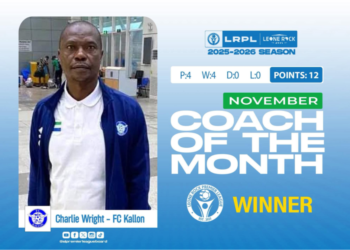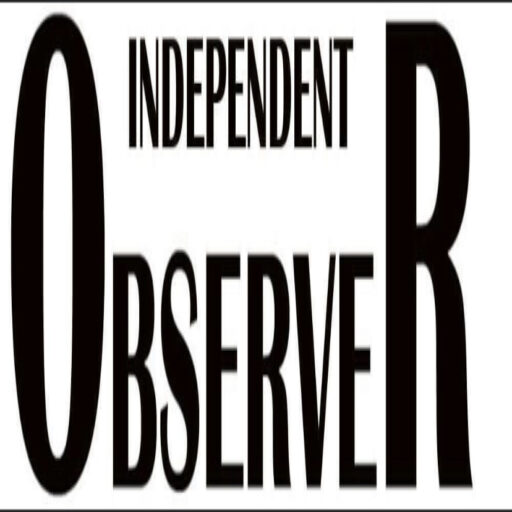Sierra Leone has embarked on a bold journey to combat HIV/AIDS with the launch of its ambitious five-year National Condom Strategy Programming (2025-2029), designed to curb the spread of the epidemic and promote a healthier future. With the theme “Just Use It,” the campaign aims to highlight the vital role condom use plays in preventing HIV transmission and other sexually transmitted infections (STIs).
The official launch event, held at the New Brookfields Hotel on Friday, February 14, 2025, marked a pivotal moment in the country’s efforts to end HIV. Director General of the National AIDS Secretariat (NAS), Abdul Rahman Sesay, emphasized the importance of the new strategy, calling it a critical tool in Sierra Leone’s HIV response. “We took leadership of this strategy because we recognize its role in our fight to end HIV and address other pressing issues in the response,” Sesay stated.
Minister of Health 1, Professor Charles Senesie, lauded the strategy as a crucial framework for driving effective condom programming nationwide. He stressed that continued collaboration and empowering citizens to make informed decisions about their sexual and reproductive health will be key to the strategy’s success.
Sierra Leone is currently grappling with an HIV prevalence rate of 1.7%, with urban areas showing higher rates (2.3%) compared to rural regions (1.2%). Out of an estimated 77,000 people living with HIV, the majority are women, and while 76% of those affected are aware of their status, condom use remains alarmingly low. Only 1% of married women use condoms, while usage among women and men with non-regular partners stands at 7% and 23%, respectively.
Deputy Country Director of the United Nations Population Fund (UNFPA), Sibeso Mululuma, expressed optimism about the impact of the strategy. “We believe this strategy will empower Sierra Leoneans to take control of their sexual health,” Mululuma said, although she pointed out a significant funding gap of $4.4 million. She reaffirmed UNFPA’s commitment to ensuring condom availability, urging continued financial support for condom programming efforts.
UNAIDS Country Director Jane Kalweo echoed Mululuma’s sentiments, emphasizing the global importance of condom use. “Condoms have prevented 117 million infections worldwide,” Kalweo noted, highlighting their low cost and high effectiveness in fighting HIV. She called for prioritizing condom access as a key tool in preventing transmission.
The government of Sierra Leone, in partnership with key stakeholders, has outlined a comprehensive plan focused on scaling up condom use across the nation. The strategy includes several major initiatives aimed at increasing both supply and demand, such as creating a National Coordination Platform to enhance collaboration across sectors.
Generating Demand Through Social and Behavior Change Communication (SBCC): Using media platforms to raise awareness.
Adopting a People-Centered Approach: Addressing the needs of different population groups.
Improving Supply Chain Systems: Ensuring condoms are widely available.
Promoting Condoms’ Triple Protection Benefits: Emphasizing their role in preventing HIV, STIs, and unintended pregnancies.
Strengthening Data Management Systems: For better decision-making and tracking progress.
The strategy is estimated to cost $10.687 million, with annual funding expected to rise from $1.901 million in 2025 to $2.237 million in 2029. However, a funding gap of $4.4 million remains a challenge.
Key to the strategy’s success will be country ownership, reduced dependence on external aid, integration with other health programs, equitable access to condoms and lubricants, and addressing gender disparities and human rights in reaching vulnerable populations.
Aligning with national and global development plans such as Sierra Leone’s National Health Sector Strategic Plan (2021-2025), the Medium-Term National Development Plan (2024-2030), and the United Nations Sustainable Development Goal (SDG) 3, the strategy aims to deliver tangible results by 2029. These include a 50% increase in condom use, significant reductions in HIV and STI transmission rates, and the prevention of unintended pregnancies.
The creation of the strategy was a collaborative effort, involving input from government ministries, NGOs, community organizations, donors, and other partners. Despite the strengths of existing policies and strong commitments from stakeholders, challenges remain. These include coordination issues among partners, quality control concerns for imported condoms, and cultural barriers that limit condom use.
With renewed focus, strategic investment, and a united front, Sierra Leone is determined to tackle these obstacles and move toward an HIV-free generation. The next five years will be critical in shaping the country’s health landscape and securing a healthier, more resilient future for all.



